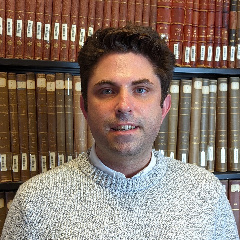 The debate over assessments—their frequency, structure, and value—has become more vibrant in recent years, first with the onset of COVID-19 and now with the advent of Generative AI. As instructors experiment with different approaches, the Math Department has increased its emphasis on assessments, yielding some early successes.
The debate over assessments—their frequency, structure, and value—has become more vibrant in recent years, first with the onset of COVID-19 and now with the advent of Generative AI. As instructors experiment with different approaches, the Math Department has increased its emphasis on assessments, yielding some early successes.
Brendan Kelly, Senior Preceptor and Director of Introductory Mathematics, notes that one of the main objectives in Harvard’s Math preparatory sequence is to provide students with a consistent, cumulative experience so that each course effectively builds off prior ones, or hands off to subsequent ones. However, the COVID-19 pandemic brought about a unique challenge. Kelly and his team observed that course-by-course experimentation with assessments during this period resulted in inconsistencies across courses, and as a result students being inadequately prepared for higher level Math courses - in turn prompting a reevaluation of their approach.